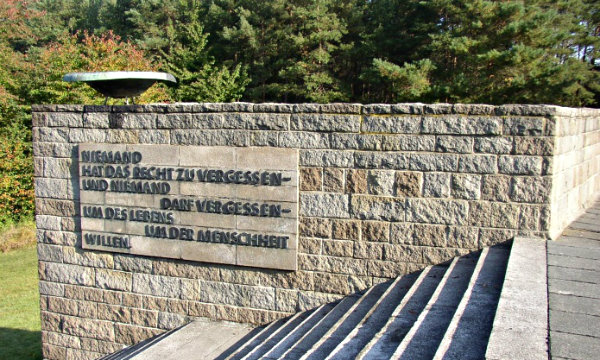Langenstein-Zwieberge Camp, a WWII Nazi concentration bivouac, was attacked by a bulldozer operated by unknown assailants just a month after the well-known Arbeit macht frei from the Dachau Concentration Camp was stolen.
According to reports, the attackers used a stolen bulldozer and smashed their way into the former Nazi prison house causing about £40,000 [€50,000] worth of damages. It appeared that the assailants wrecked the memorial site in the Langenstein-Zwieberge Camp.
Though authorities stated that the motive of the attack was still unclear, they are not ruling out the involvement of neo-Nazi groups. However, as the signs and information boards within the memorial site were left untouched, then, according to them, the far right is not “necessarily connected” to the recent violation of Langenstein-Zwieberge.
According to a police spokesman in an interview with a local radio station, they are suspecting the culprit who started the bulldozer and driving it out as a sort of a prank. Additionally, the spokesman admits that aside from that, the police have no other leads about the case.
Apparently, the bulldozer was stolen from a building site nearby the Langenstein-Zwieberge camp and was driven a mile across the fields before going through and tearing down the camp’s whole perimeter fence and memorial site. Furthermore, the equipment has rammed the main gates to the eight-mile underground tunnels concentration camp laborers had built way back in the Second World War.
The bulldozer was later on found torched just nearby Langenstein-Zwieberge.
In WWII history, the Langenstein-Zwieberge camp was a subcamp of the infamous Buchenwald concentration camp. It was built near the end of WWII — in 1944. Throughout its operation, over 7,000 prisoners coming from 23 various countries were sent to Langenstein-Zwieberge as slave laborers.
Here, they were instructed and forced by the Nazis to build large passages underground. These tunnels were used to conceal the manufacture of warplanes and weapons from the Allies.
![Langenstein-Zwieberge Camp Attack: [Top] The torched bulldozer, [Bottom] The extent of the attack's damages.](https://www.warhistoryonline.com/wp-content/uploads/sites/64/2014/12/Langenstein-Zwieberge-camp-attack.jpg)
Meanwhile, in spite of the reward offer of €3,000, the Arbeit macht frei sign of Dachau is still not recovered. Authorities’ investigation are still ongoing a month after the theft.
